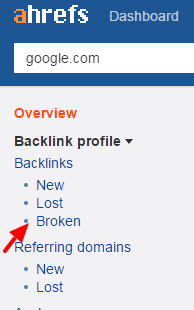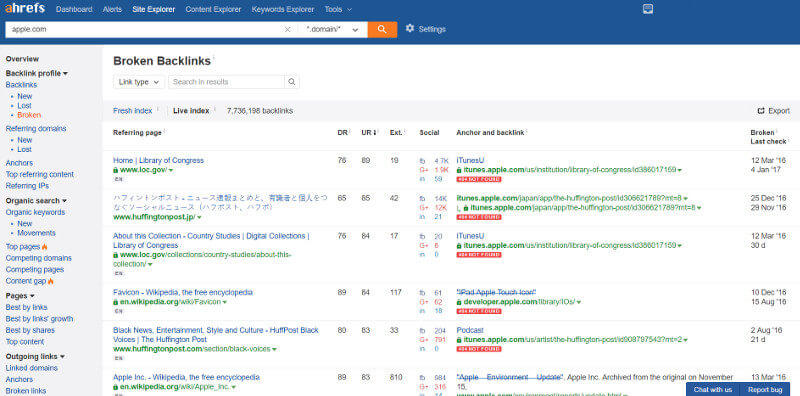Broken link building made easy
Broken link building is a great tactic, but prospecting for broken links in your niche can be time-consuming and inefficient. Luckily, columnist Patrick Stox has a handy method for identifying relevant broken linking opportunities.

I see questions on forums every day from people asking how they can build links to their website. There are many ways to build links, but there’s one tactic in particular that I believe deserves a modern update: broken link building. Rather than declaring something dead or saying it doesn’t work, SEOs should be working on improving methods to be as efficient as possible.
What is broken link building?
Broken link building is a tactic that involves finding resources in your niche that are no longer live, recreating a version of the content and reaching out to webmasters who link to that content asking them to replace the broken link with a link to your newly created resource. You’re providing value to the webmaster, helping them clean up their website and the web in general, while also building links to your website.
Broken link building isn’t a new tactic, but with the explosive growth of the web in recent years and new website technologies and redesigns, the number of broken links is increasing. I’m surprised this type of link building doesn’t seem to be in favor anymore. I hear horrible tales of tremendous amounts of time invested in research and low response rates to the outreach. When effectiveness decreases, it’s time to figure out why and to look at the whole process to make it better and faster.
What’s involved in broken link building?
I won’t pretend for a second that this article covers the topic as well as Russ Jones did in The Broken Link Building Bible and Broken Link Building Bible: The New Testament. Russ broke out three main steps: Prospecting, Content Creation and Outreach. It sounds simple enough, until you realize prospecting alone requires a lot of time and knowledge of search queries and crawls or scrapes of the web and Google search results.
How do we make broken link building easier?
Let’s face it, link building is hard and confusing, especially for newer people in the industry. I believe it’s a lot easier to fix a link to your website that’s broken than it is to go get new links, and I have advocated for fixing links to your old pages not once, but twice in past articles on this site.
I still believe this is one of the easiest wins for a website that’s been around a while, but today I want to show you an even easier way to prioritize these redirects rather than redirecting everything. Instead of gathering all pages, let’s use Ahrefs database and see the broken links to our website. It’s as simple as putting in your domain and clicking a link.
With this, I have information on where links are coming from and what pages they link to on my website. I can prioritize redirects based on which pages had the most equity lost or which are the most important for me to improve.
While I’d call this process link reclamation instead of broken link building, the two have a lot of similarities. After all, link reclamation saves people from finding links to broken pages on your website and using broken link building against you.
Using link reclamation on competitors to perform broken link building
If we extend this process a bit and look at our competitors’ broken links instead, that’s where we hit the jackpot on time saving.
Take Apple as an example. As you can see in the screen shot below, they have nearly 8 million links to their domain that currently lead to pages that 404.
If we export these and group them by the pages they link to, that’s a lot of opportunities for a competitor to pursue with broken link building. We just cut out all the advanced queries, scraping, crawling and so on in the data-gathering phase of broken link building.
The next step was to create content, right? Being a competitor, it’s likely that we have content similar to what our competitors had on their website already. This won’t be the case all the time, of course, but if we do have a similar resource, then we just cut out another large chunk of time in the broken link building process.
What’s left will be to gather the contact information of the website owners linking to these pages and reach out to them. We have cut hours upon hours out of the broken link building process by simply using data Ahrefs has already gathered — and have likely cut out time from the content creation process as well using this method.
Outreach isn’t my strength, so I’ll refer you to some of the articles from Julie Joyce and Andrew Dennis for tips such as Manual link building’s 7 worst outreach offenses and Link building outreach: preparation meets persuasion.
TL;DR
Make broken link building faster by using the broken links report in Ahrefs to find broken pages on your competitors’ websites and that you already have content for.
Contributing authors are invited to create content for Search Engine Land and are chosen for their expertise and contribution to the search community. Our contributors work under the oversight of the editorial staff and contributions are checked for quality and relevance to our readers. The opinions they express are their own.
Related stories
New on Search Engine Land

